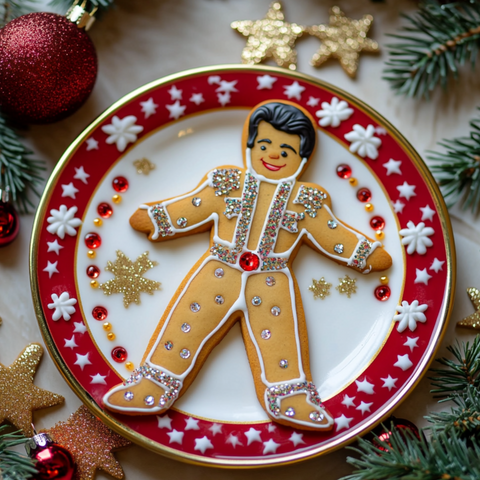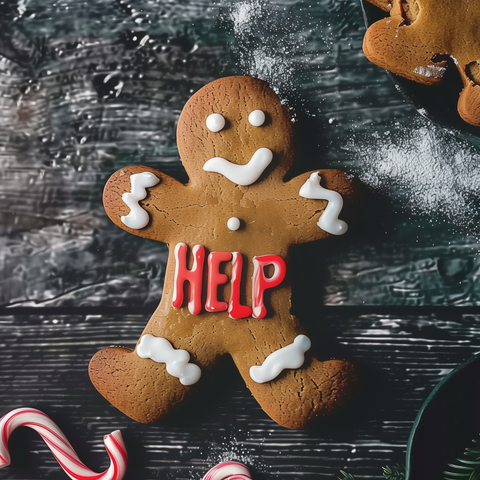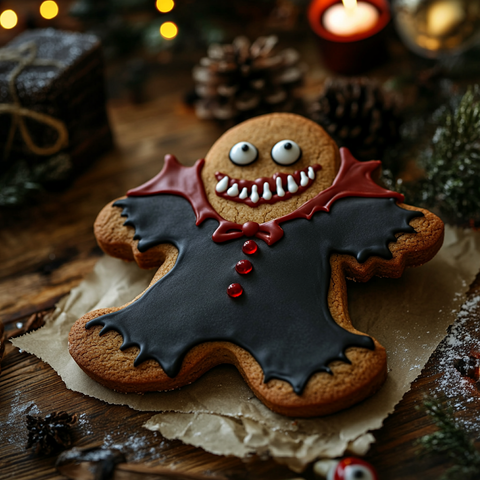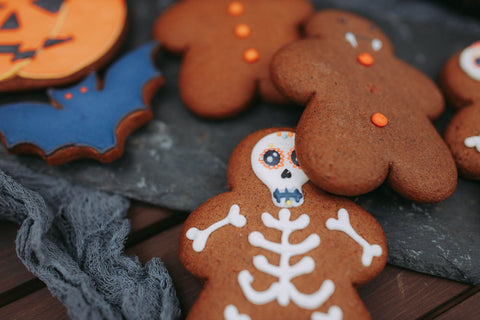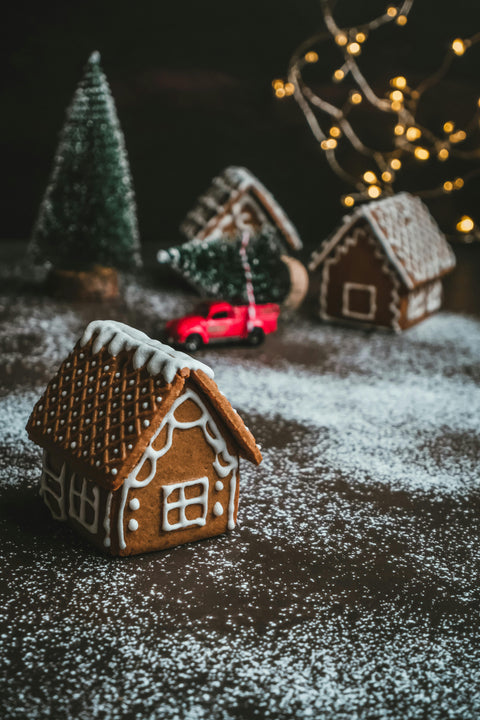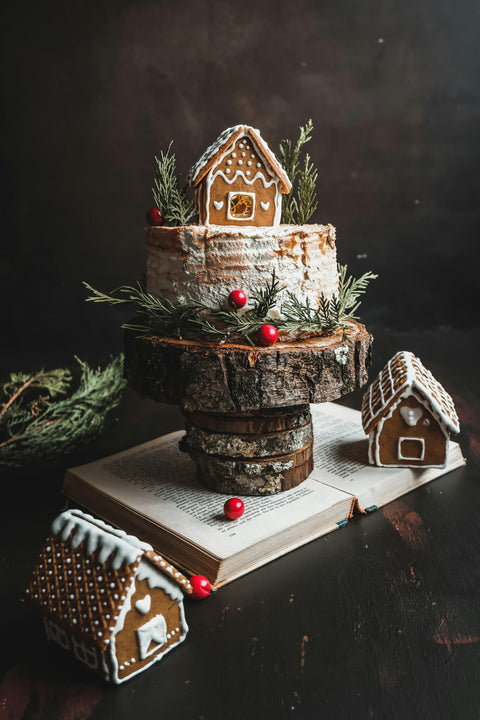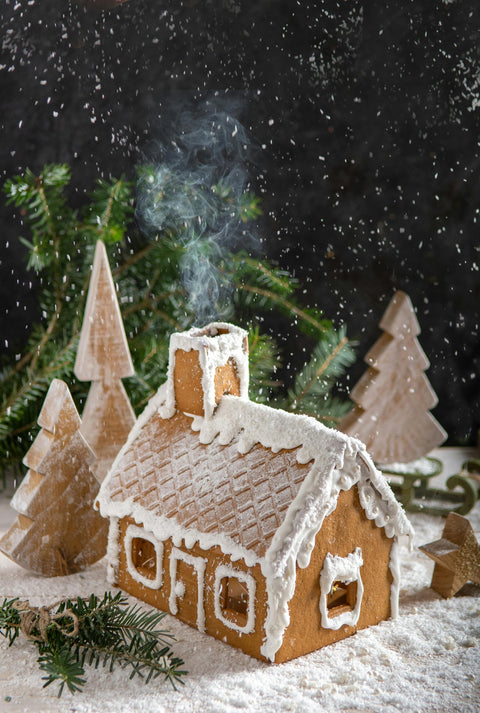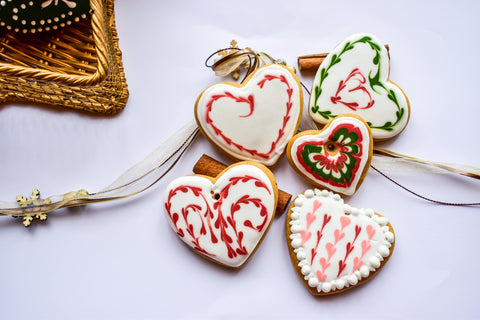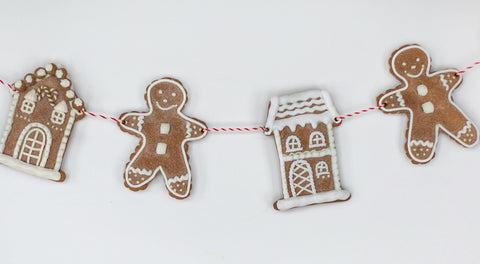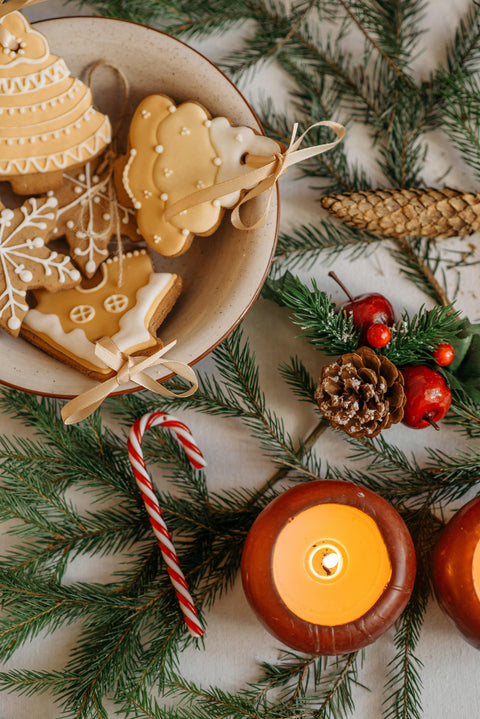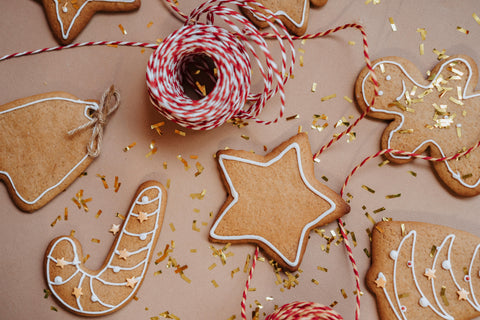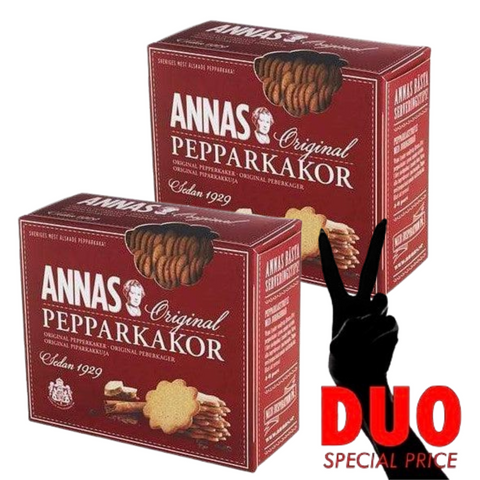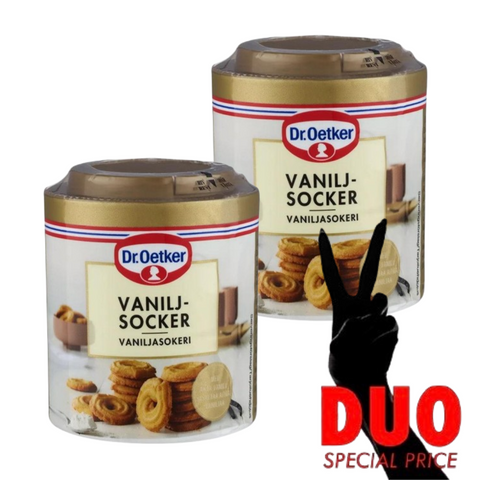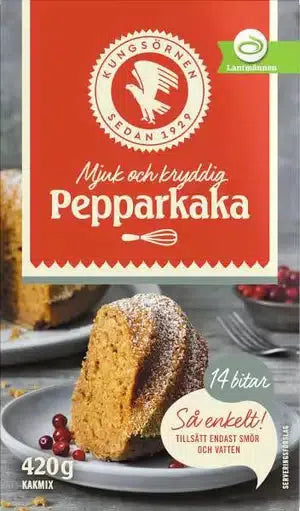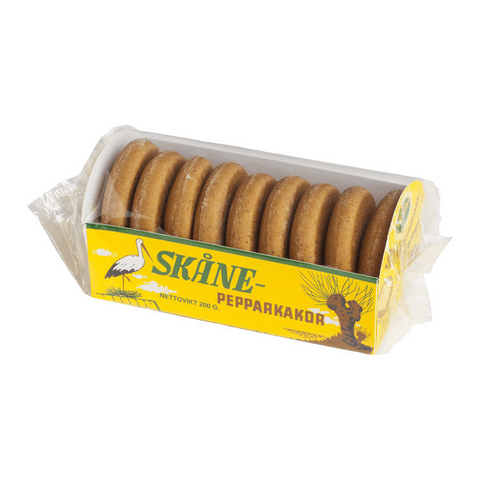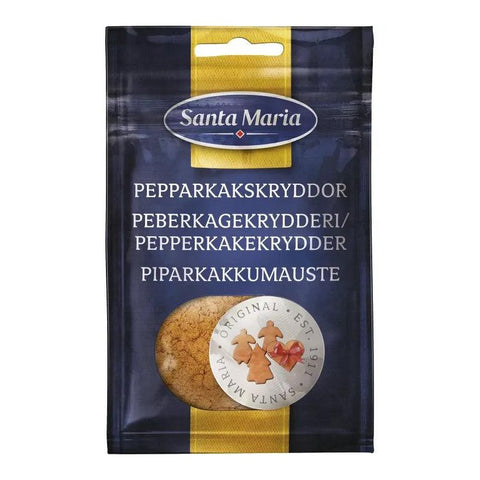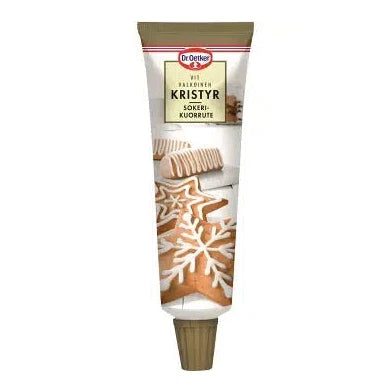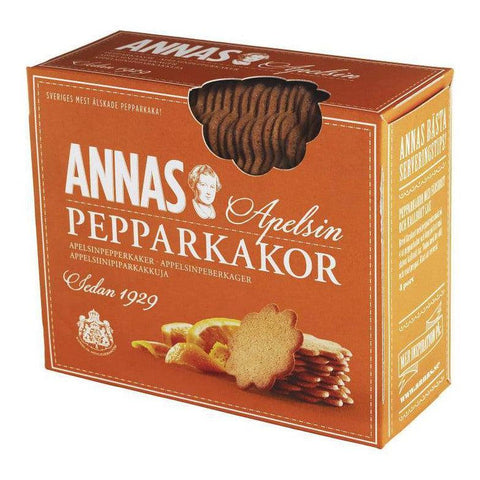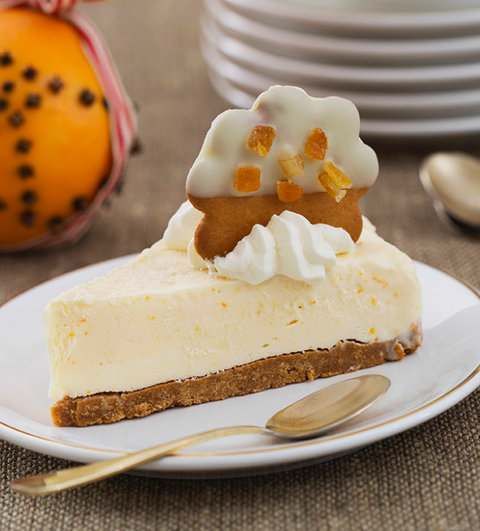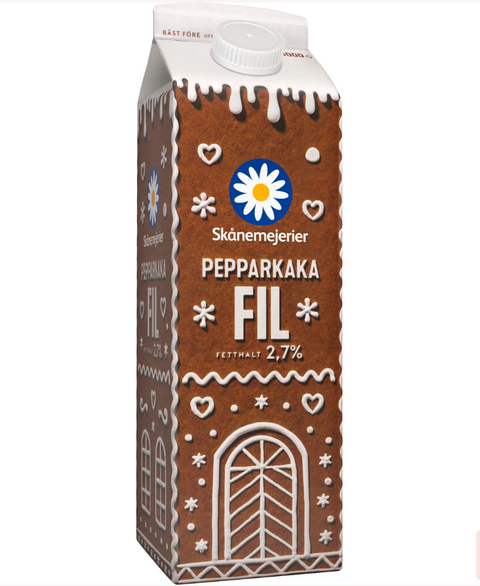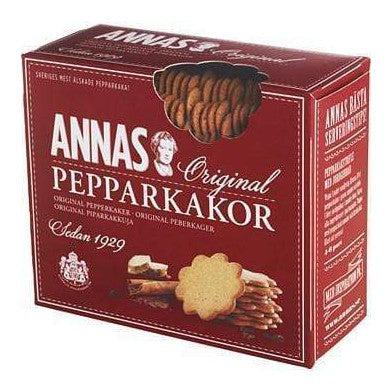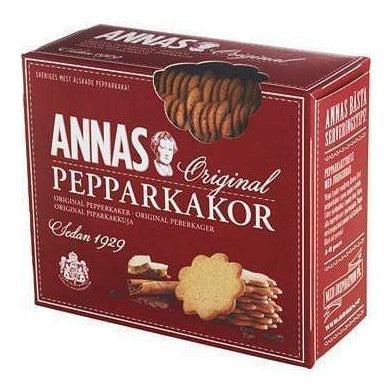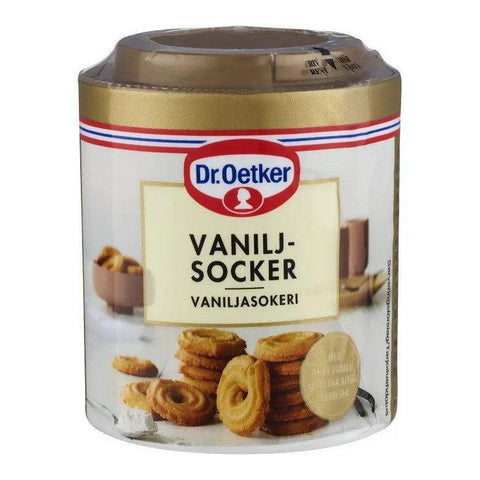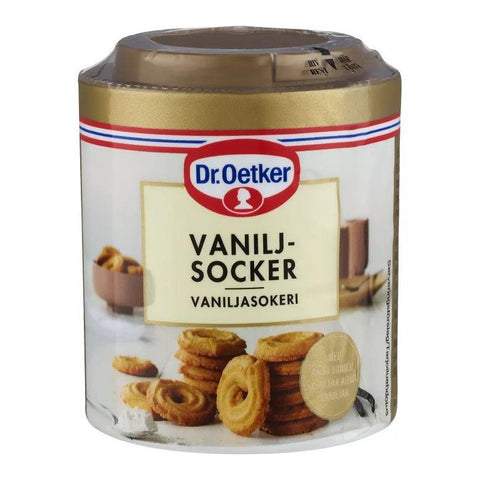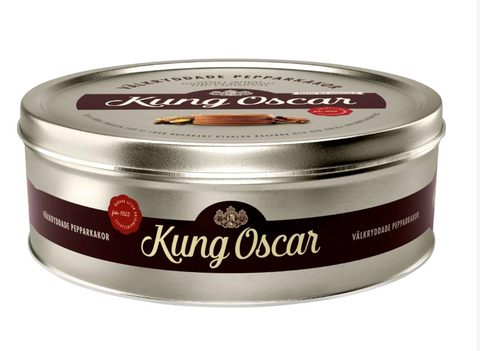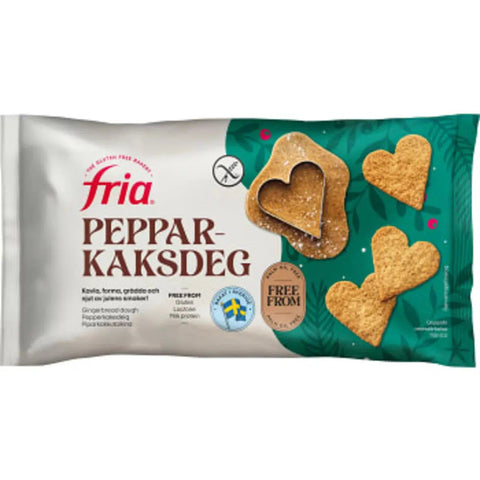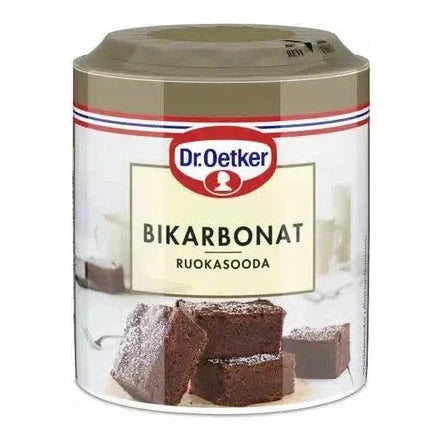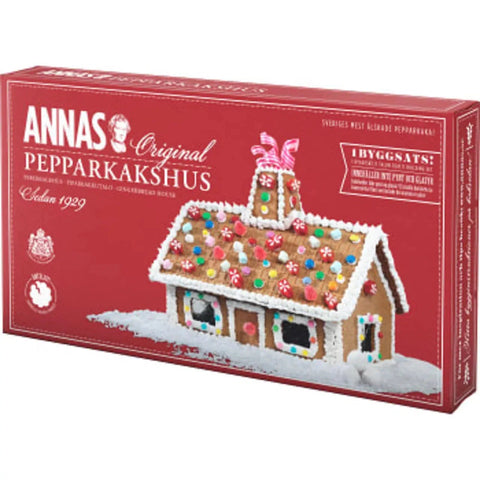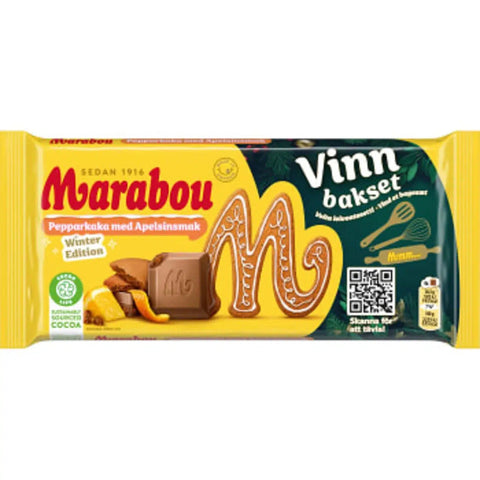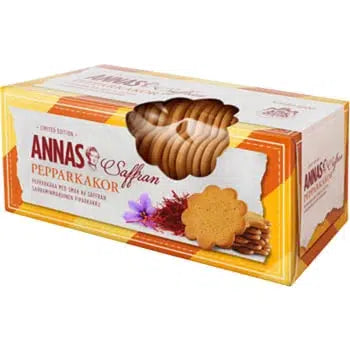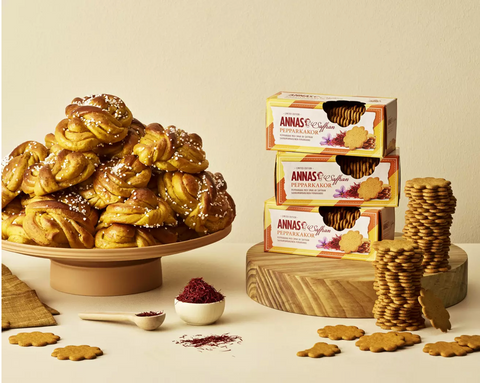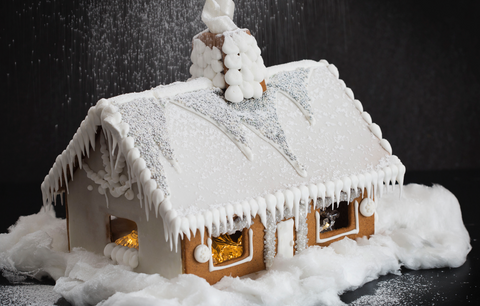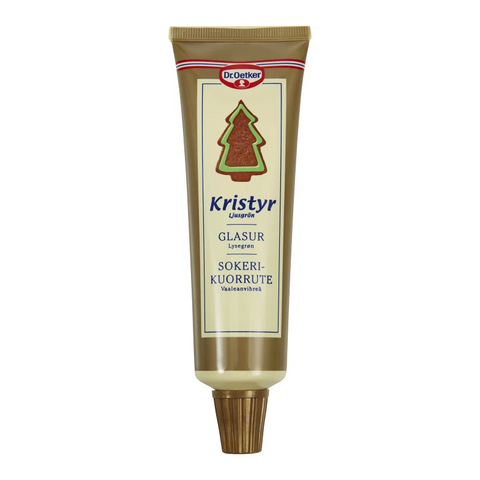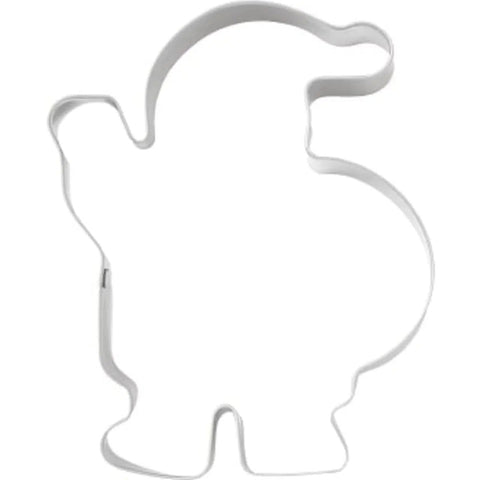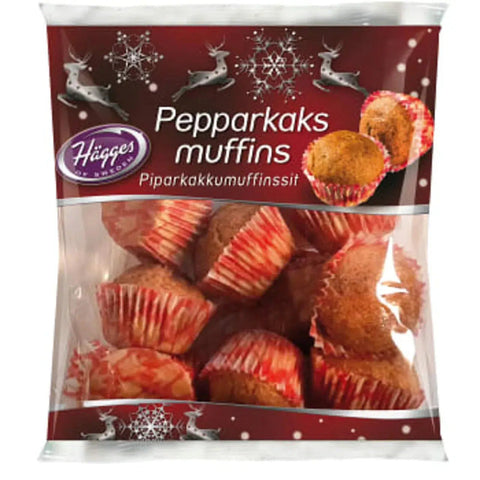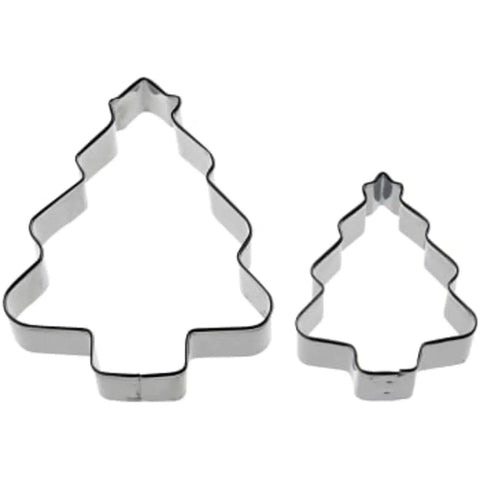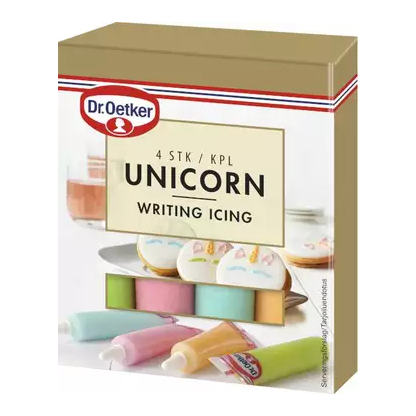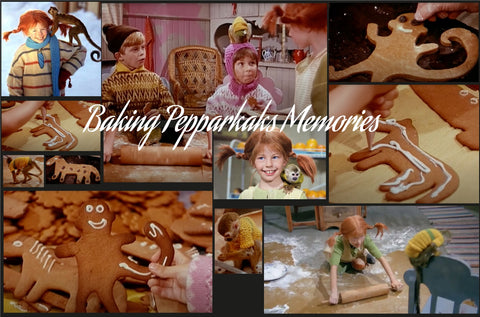

Baking Pepparkaks Memories
Once upon a time, in the heart of a cozy Swedish kitchen, the air was filled with the warm, spicy aroma of gingerbread. It was the unmistakable scent of Christmas, mingling with the sound of laughter as tiny hands sneaked pieces of dough when they thought no one was looking. The golden glow of candlelight flickered against frosted windows, while outside, snowflakes drifted lazily to the ground. Inside, the kitchen wasn’t just alive with baking—it was a hub of tradition, storytelling, and joyful chaos.
Gingerbread (pepparkakor) has always been more than a simple holiday treat in Sweden. It’s a cultural staple that brings families together, whether they’re rolling out dough, decorating cookies, or savoring them with a steaming cup of glögg or coffee. Gingerbread cookies make their way into every corner of Swedish Christmas celebrations—from tree ornaments and festive garlands to centerpiece gingerbread houses that rival architectural masterpieces.
And who could forget one of Sweden’s most beloved cultural figures, Pippi Longstocking, and her iconic gingerbread baking escapades? In one memorable episode, Pippi decides to bake her cookies directly on the kitchen floor—because why use a table when you can roll dough wherever you please? True to her character, Pippi’s approach is anything but conventional, turning a simple baking session into a hilarious, chaotic adventure. Her antics remind us that gingerbread-making isn’t about perfection; it’s about fun, creativity, and embracing the unexpected.
This spirit of playfulness and community is what makes gingerbread such a cherished part of Swedish culture. In many homes, the tradition of baking gingerbread is accompanied by storytelling, where grandparents share tales of their childhood Christmases, and children dream up their own fantastical cookie designs. It’s a time when generations come together, bound by the warmth of shared experiences and the universal love of sweet, spiced dough.
Gingerbread also plays a starring role in Swedish holiday markets, where its scent mingles with roasted almonds and mulled wine, drawing crowds to stalls brimming with festive treats. And let’s not forget the quirky traditions, like breaking a gingerbread heart in your hand to see how many of your wishes will come true. It’s these little rituals that add a touch of magic to every bite.
So this holiday season, channel your inner Pippi—embrace the messy, the whimsical, and the wonderfully imperfect side of baking. Whether your gingerbread cookies come out shaped like stars or a little more like blobs, the joy is in the process. After all, the true essence of pepparkakor is bringing people together, creating memories, and sharing a laugh over a plate of delicious, imperfect cookies.
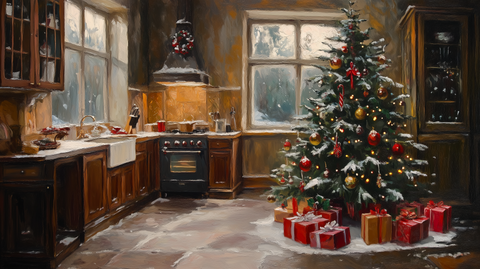
The Cookie That Started It All
Gingerbread cookies, or pepparkakor as they are known in Sweden, boast a history as rich and spiced as the cookies themselves. Though today they are synonymous with Christmas, their origins trace back to medieval Europe, where monks baked them using exotic spices like ginger, cinnamon, and cloves. These spices, which had journeyed along the fabled Silk Road, were as valued for their purported health benefits as for their flavor.
By the 15th century, pepparkakor had gained popularity in Sweden, gracing the tables of royal courts and monasteries. Early records indicate that these cookies were not merely a festive indulgence but were also viewed through a medicinal lens. Swedish monastic texts from the 16th century reveal that gingerbread was believed to aid digestion and lift spirits, reflecting the medieval humoral theory, which linked food properties to physical and emotional health. It was thought that the warming nature of ginger could “heal the stomach and heart,” making these cookies a thoughtful remedy for winter’s ailments.
As time went on, pepparkakor transitioned from their medicinal beginnings to become a centerpiece of Swedish Christmas traditions. By the 18th century, they were firmly entrenched as holiday staples, celebrated not just for their taste but also for their decorative potential. Families began using carved wooden molds to shape the dough into intricate forms—animals, stars, hearts, and human figures. These decorative cookies were more than edible treats; they were given as heartfelt gifts, hung as ornaments on Christmas trees, and even exchanged as love tokens, often bearing inscriptions of good wishes.
Today, the tradition continues with an added layer of creativity: decorating gingerbread cookies with colorful icing and candies. Whether crafting elaborate designs or adding a personal touch with playful patterns, the act of decorating pepparkakor remains a cherished family activity. It’s a celebration of both the cookie’s historical roots and its enduring role in bringing people together during the festive season.
Introducing: The Great Gingerbread Decoration Contest!
No holiday season is complete without a little friendly competition, right? This year, why not spice up your gingerbread tradition with a family contest that’s all about creativity, laughter, and maybe just a hint of chaos? Introducing: The Craziest Gingerbread Decoration Challenge!
Here’s the idea: Instead of the usual stars and trees, challenge your family to turn their gingerbread cookies into wild, unconventional creations. Forget traditional—think punk rock gingerbread stars with candy mohawks, or a gingerbread rendition of your favorite celebrity (Gingerbread Elvis, anyone?). Let your imagination run wild. Maybe Uncle Joe’s gingerbread man is wearing lederhosen, while your sister’s looks suspiciously like a famous action hero.
How to Get Started:
- Set the Rules (or don’t!):
Anything goes—use whatever you can find in your pantry to create the most outrageous gingerbread designs. Extra points for humor and originality! - Create Your Characters:
Each family member decorates their gingerbread cookie to resemble a known figure or theme. From fictional characters to family inside jokes, the wilder, the better. - Host a Gingerbread Showdown:
Once everyone has completed their masterpiece, line them up for a family vote. Categories could include: - Share the Laughter:
Take lots of photos and share them with friends or on social media. Better yet, turn it into an annual tradition and keep a scrapbook of past creations.
Building Dreams, One Gingerbread House at a Time
The tradition of building gingerbread houses traces back to 16th-century Germany, where they were inspired by the famous Brothers Grimm fairy tale, Hansel and Gretel. The story of two children discovering a house made entirely of sweets captured the imagination of bakers, who began creating elaborate edible structures during the holiday season.
This practice eventually spread to Scandinavia, where Swedes embraced gingerbread houses as a centerpiece of their Christmas festivities. The oldest documented gingerbread houses in Sweden date back to the 1800s. These early versions were simpler than today’s elaborate constructions but still demonstrated remarkable craftsmanship, often featuring intricate latticework and detailed candy decorations.
Swedish families traditionally gather to build these houses as a communal activity. It’s a test of patience and creativity: the sturdy walls are carefully glued together with royal icing, and every piece of candy or sprinkle serves a decorative purpose. Beyond their aesthetic appeal, gingerbread houses symbolize togetherness and ingenuity—a way for families to bond during the festive season. In modern times, competitions for the most intricate and imaginative gingerbread houses have become popular, showcasing this edible art form's enduring charm.
Ornaments That Smell Like Home
In addition to being delicious, gingerbread has a long-standing tradition as a decorative element. In Sweden, the practice of using gingerbread as Christmas ornaments dates back to at least the 19th century. Before the widespread availability of glass and metal ornaments, families would bake gingerbread cookies in festive shapes—stars, angels, and hearts—punching small holes in them to thread ribbons. These cookies would then be hung on Christmas trees or strung together as garlands to adorn windows and mantels.
What makes these gingerbread ornaments particularly special is their dual purpose. Not only do they add a rustic, homemade charm to holiday décor, but they also fill the house with the warm, spicy aroma of ginger and cinnamon—a natural and delightful air freshener. In some cases, these ornaments were even used as small gifts or placed on tables as edible centerpieces.
Historically, Swedish Christmas trees were decorated with a combination of edible items such as apples, candies, and gingerbread cookies. This tradition underscores the resourcefulness of past generations, who often had to create beauty and festivity from simple, accessible materials. Today, many families continue to bake gingerbread ornaments, blending modern aesthetics with timeless Scandinavian traditions.
The Gingerbread Cake That Stole the Show
While gingerbread cookies and houses are well-known, gingerbread cake (mjuk pepparkaka) holds a special place in Swedish Christmas celebrations. This rich, spiced cake has roots in the same medieval traditions as its cookie counterparts but evolved into a softer, more indulgent dessert. The first gingerbread cakes in Europe were dense, bread-like confections sweetened with honey and flavored with spices that were once as valuable as gold.
In Sweden, gingerbread cake became popular in the 19th century, particularly as Christmas traditions became more formalized. The cake’s warm spices—ginger, cinnamon, cloves, and cardamom—are complemented by the deep, molasses-like flavor of dark syrup (brödsirap), a key ingredient in Swedish baking. The cake's texture is moist and tender, often enhanced with a dusting of powdered sugar, a dollop of whipped cream, or a tangy lemon glaze.
What sets gingerbread cake apart is its versatility. It can be served as an elegant dessert at holiday dinners, a cozy treat during fika, or even as a comforting breakfast alongside coffee. Its flavors deepen over time, making it an ideal make-ahead dessert that stays delicious for days. For many Swedes, the gingerbread cake is the ultimate symbol of Christmas comfort—a dessert that embodies the warmth and togetherness of the season.
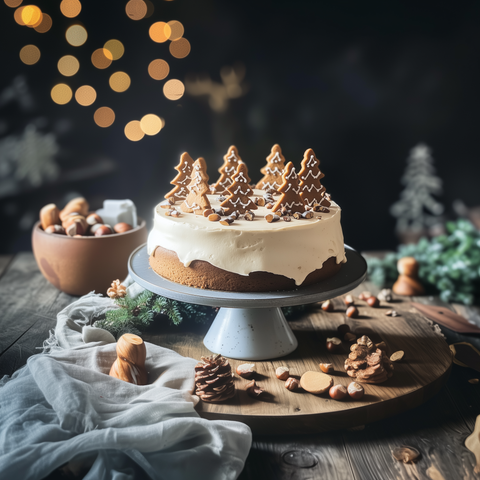
Soft Gingerbread Cake with Brown Butter Frosting and Gingerbread Trees
Why choose between soft and crispy gingerbread? Here you get both in one cake!
Ingredients:
Servings: 12 slices
Preparation Time: 2 hours
Ingredients:
For the Cake:
- 5 eggs
- 4½ dl (450ml) granulated sugar
- 5 dl (500ml) plain flour
- 1 tbsp baking powder
- 1 tbsp gingerbread spices
- 1 dl (100ml) natural yogurt
For the Brown Butter Frosting:
- 130g butter
- 2 dl (200ml) powdered sugar
- ½ tsp vanilla sugar
- 1 tsp cinnamon
- A pinch of salt
- 300g cream cheese
For the Filling:
- 2 dl (200ml) lemon curd
For Decoration:
- 15 gingerbread cookies
- 2 tbsp chopped roasted hazelnuts
Instructions:
- Preheat and Prepare:
Preheat the oven to 175°C. Line a 25 cm diameter springform pan with baking paper. - Make the Batter:
In a bowl, whisk eggs and sugar until fluffy. In another bowl, sift together the flour, baking powder, and gingerbread spices. Gently fold the dry ingredients into the egg mixture, alternating with the yogurt. - Bake:
Pour the batter into the prepared pan and bake in the lower part of the oven for about 50-60 minutes or until a toothpick comes out clean. Let the cake cool before slicing it into three layers. - Make the Brown Butter Frosting:
Melt the butter in a saucepan until golden brown and nutty in aroma. Be careful not to burn it. Allow it to cool until it solidifies to the consistency of soft butter. Beat the butter with powdered sugar, vanilla sugar, cinnamon, and salt until fluffy. Gradually add the cream cheese and beat until smooth. - Assemble the Cake:
Spread a layer of lemon curd over the bottom cake layer. Top with some frosting, then place the second cake layer on top. Repeat the process and finish with the third layer. - Frost and Decorate:
Spread the remaining frosting over the top and sides of the cake. Decorate with gingerbread cookies and pipe royal icing for details if desired. Sprinkle chopped hazelnuts on top for a crunchy finish.
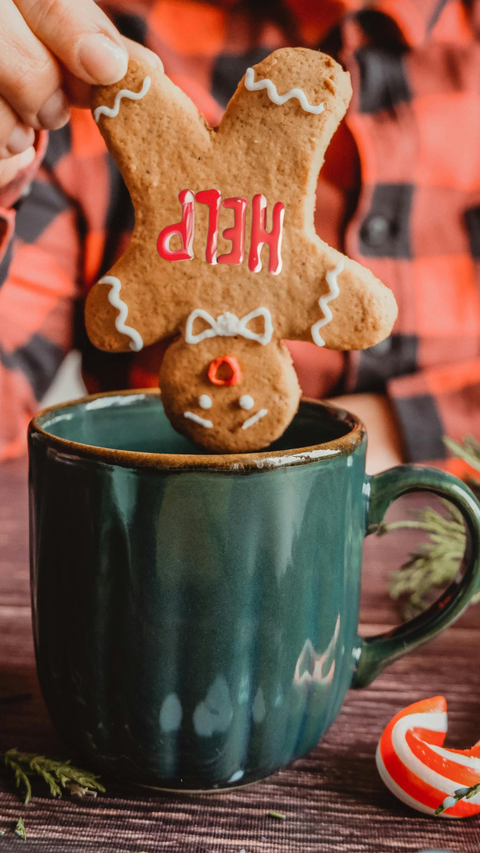
The Spirit of Gingerbread
The enduring charm of gingerbread lies in its ability to bridge the gap between past and present. From its ancient medicinal uses to its role as a festive centerpiece, gingerbread has woven itself into the fabric of holiday traditions across the world. In Sweden, it has become a symbol of creativity, warmth, and familial love, bringing people together to share stories, laughter, and the simple joy of baking. It’s a tradition as whimsical and adventurous as Pippi Longstocking herself, who once turned her kitchen into a playground of gingerbread chaos, proving that baking is about fun, imagination, and embracing the unexpected.
This holiday season, channel your inner Pippi and celebrate the magic of gingerbread in all its forms. Whether you’re decorating cookies, constructing houses, crafting ornaments, or baking a spiced cake, each creation is a tribute to centuries of culinary heritage and holiday cheer. Let your kitchen come alive with laughter, flour-dusted countertops, and the irresistible scent of gingerbread, just as it should during this most magical time of the year.

